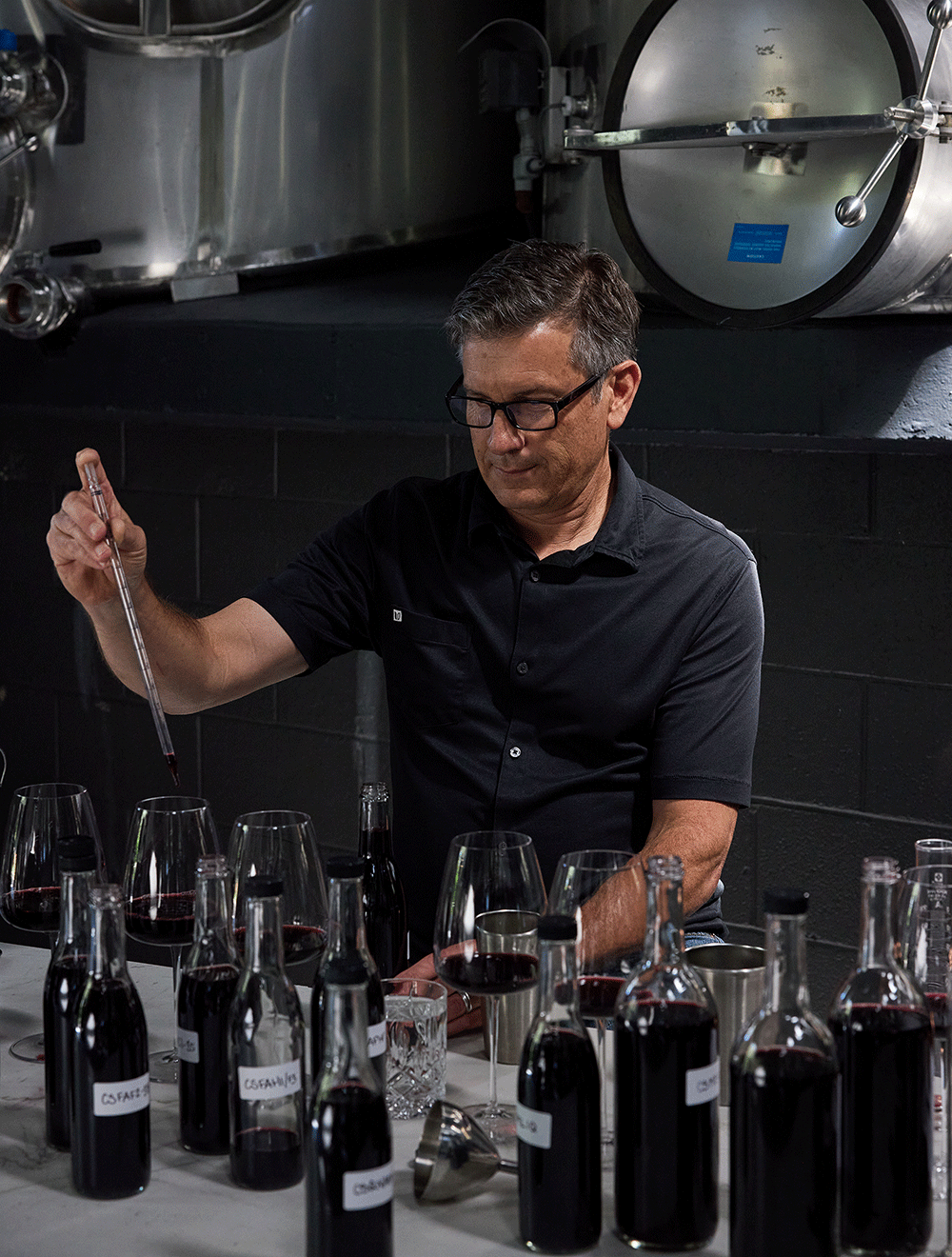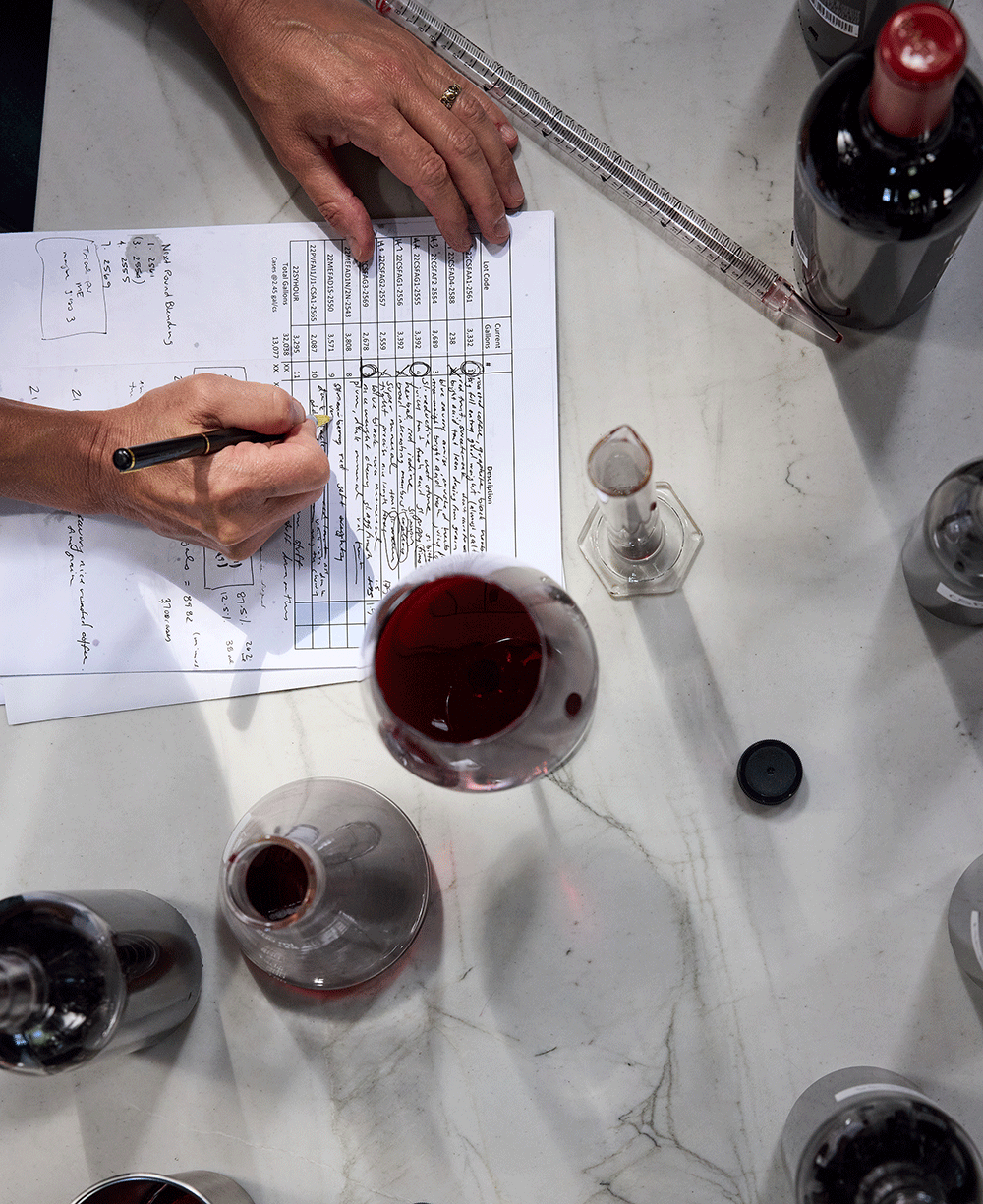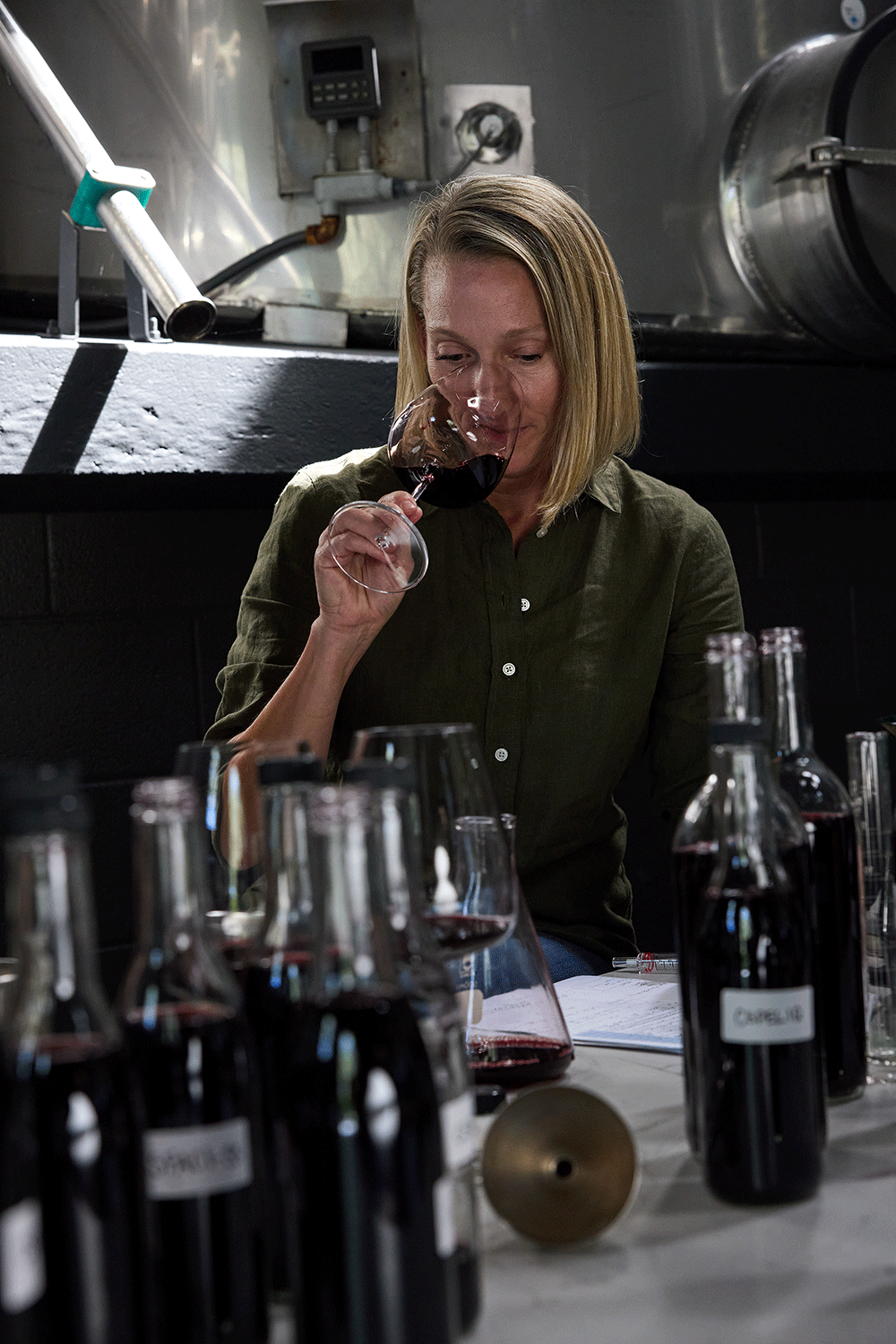And it gets even more place-specific than that: The wine samples David is mixing in his Erlenmeyer flask come from a relatively small number of individual “lots” from the Faust Estate. Although it is a single, contiguous vineyard parcel, the Coombsville vineyard is subdivided into 28 distinct blocks based on the variegated soil structure and other physical traits that may affect grape ripening. As Beloz explains, these individual blocks aren’t even harvested all at once (“it is often literally row by row”), which in turn leads to a borderline unwieldy number of micro fermentations in various stages of completion throughout the fall. Says Jelinek: “We might have 40 different fermenters going at one time when we’re at peak harvest.”
All of which is to say: The Pact isn’t just a “single vineyard” wine; it’s a vineyard-within-a vineyard wine, one whose component pieces are likely to change from vintage to vintage. Years of experience in this special spot have led Beloz and Jelinek to some firm conclusions about what The Pact needs to say about that spot. Beloz, the Faust Estate Director, is kind of like the executive producer on the project, responsible for the overall vision, while Jelinek, as the Faust Winemaker, is more of the engineer at the mixing board, pulling the levers to create that signature sound. Each of the Faust Vineyard’s 28 blocks has its own voice; the goal each year is to put together a group that can harmonize.
Making the Cut
Although Beloz and Jelinek revisited their young, somewhat raw wines many times throughout the early spring of 2023, their next major sit-down was in June of that year, nine months post-harvest, after the wines had some time to settle in its oak barrels to begin aging. Although flavors and aromas imparted by the wood are fairly prominent at this stage, the wines have evolved to a point where the team can start isolating lots to consider for The Pact. These lots are identified by vineyard block number and grape variety (it’s mostly “CS”—Cabernet Sauvignon—for the latter, as it dominates the vineyard plantings).
At this stage, there were 19 lots of Cabernet Sauvignon to consider. Eleven of these were set aside for The Pact, with the understanding that there would be further “cuts” down the line. “It’s a stylistic assessment,” Beloz emphasizes. “It’s not like we’re throwing eight lots of wine away—anything not selected for The Pact is used to create the base of the Faust Napa Valley Cabernet. Typically, about half of the Faust Cabernet is from Coombsville fruit. This vineyard is at the heart of everything.”
The Final Countdown
There are plenty of analogies for what’s going on here— the travel-team coach making successive cuts until his squad is finalized, the chef arranging her mise en place, the sculptor chipping away at a hunk of rock—and the notes scribbled on the team’s wine stained spreadsheets are in a very peculiar and Faust-specific style of winespeak. Jelinek, for example, speaks often how wines have different “shapes” on the palate. Acidity in a wine takes on myriad qualities, from “juicy” to “tangy” to “sharp.” And there is, of course, a whole color spectrum to the fruit sensations in the wines, from red to purple to blue/black. “From vintage to vintage, there’s no set recipe for us to arrive at the style we’re trying to achieve,” Jen says. “There are a lot of different ways to get there.”
As the tasting journey continued into the winter of ’23-’24, Jen and David cut out five of the remaining 11 lots reserved for The Pact. They had their team, which was anchored by a blend of wines from the A1, G1, and G3 blocks that would form the “core” (about 74%, in the final analysis) of the 2022 Pact blend. Another substantial percentage (22%) came from the “very volcanic” F2 block. In the end, of all the wine produced from the Faust estate vineyard in 2022, about 20% ended up being selected for inclusion in The Pact.





